
Joseph Bellamy was an American Congregationalist pastor and a leading preacher, author, educator and theologian in New England in the second half of the 18th century. He was a disciple of Jonathan Edwards, and along with Samuel Hopkins, Timothy Dwight IV, Nathaniel William Taylor, and Jonathan Edward Jr., one of the "Architects of the New Divinity", a branch of the New Light movement that came out of the Great Awakening. A proponent of education for both clergy and laity, for a half century out of his rural Bethlehem, Connecticut church he trained fifty ministers, and founded what was possibly the first American Sabbath or Sunday school.
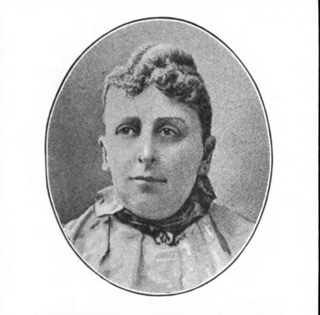
Harriet Abbott Coolidge was an American philanthropist, author and reformer. She did much in the way of instructing young mothers in the care and clothing of infants, and furthered the cause to improve the condition of infants in foundling hospitals. She contributed a variety of articles on kindergarten matters to the daily press, and while living in Washington, D.C., she gave a series of "nursery talks" for mothers at her home, where she fitted up a model nursery. Coolidge was the editor of Trained Motherhood; and author of In the Story Land, Kindergarten Stories, Talks to Mothers, The Model Nursery, and What a Young Girl Ought to Know. She was one of the original signers of the Society of the Daughters of the American Revolution, and was an active member of four of the leading charity organizations in Washington. She died in 1902.

Lepha Eliza Bailey was an American author, lecturer, and social reformer.

Ella Brockway Avann was a 19th-century American educator and writer. After graduating from Albion College of Michigan, she subsequently became preceptress of that institution. She filled the chair of English literature and also lectured on the history of music. For 10 years, she was president of the Woman's Foreign Missionary society. Avann made frequent contributions to the religious press. She held official positions in various literary, social and benevolent societies.

Myra Belle Martin was an American teacher, writer, and financier. Having taught one year in Pennsylvania, six years in Connecticut, and one year in Massachusetts, she was the first woman elected president of the Eastern Connecticut Teachers' Association. She retired from teaching in 1889 and became associate manager of the New York City office of Prang Educational Company, 1889–93. After this time, she held various positions for several important corporations, including secretary and treasurer of the San Luis Mining Company; secretary of the George A. Treadweil Mining Company; as well as secretary and director of the Copete Consolidated Copper Company, and Fahnestock Electric Company.

Euphemia Vale Blake was a British-born American author and critic. She wrote extensively for the North American Review, the Christian Examiner, the Boston Evening Transcript, and other well-known publications. From 1857, she lived in Brooklyn, engaged in journalism. She was the author of Arctic Experiences; Teeth, Ether and Chloroform; History of Newburyport; A History of Tammany Hall, and Ocean Wonders.

Maude Gillette Phillips was an American author, educator and animal welfare activist. She was the author of Popular Manual of English Literature. Phillips was a prolific writer for magazines in fiction and criticisms under pen names. Known for her wide social experience, she seemed to be more a woman of the world than a scholar or author.
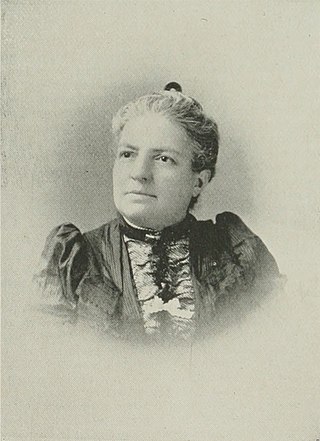
Esther T. Housh was a 19th-century American social reformer, author, and newspaper editor. She was the President of the Vermont State Woman's Christian Temperance Union (WCTU). While serving as press superintendent of the National WCTU, she instituted the National Bulletin. She was the editor of The Woman's Magazine, as well as the author of many temperance leaflets, and poems.

Amanda L. Aikens was an American editor and philanthropist. During the American Civil War, she was one of the noted women workers, and it was through her public appeals that the question of the national soldiers' homes was agitated. She raised money in Wisconsin for the Johns Hopkins School of Medicine in Baltimore for the purpose of having women admitted on equal terms with men. She took an active interest in all charity and educational work in her state. Aikens was instrumental in founding the Wisconsin Industrial School for Girls, and was a member of the Humane Society, the Woman's Club, and the Athenaeum. In 1887, she began to edit the "Woman's World" section in the Evening Wisconsin.

Eva Munson Smith was an American composer, poet, and author. She was the author of Woman in Sacred Song (1885), a representative work of what women have done in hymnology. She was the author of a large number of temperance songs and other works, which became very popular. Her poems appeared in Poets of America and other standard works. Her best known productions were "Woodland Warblings", "American Rifle Team March", and "I Will Not Leave You Comfortless".

Esther W. Taylor was an American physician, one of the earliest women physicians in New England.

Elizabeth Willisson Stephen was an American author. Since 1878, she contributed prose and poetry to the northern and southern press. Her poem, "Mine", published in the Gulf Citizen, was characterized as classic in its treatment. With her mother, she was the co-author of The Confessions of Two, a novel.

Sarah Maria Clinton Perkins was an American Universalist minister, social reformer, lecturer, editor, and author of Sunday school books. Early in life, she was engaged in educational work. She was involved in the temperance movement and advocated for women's suffrage. She was an early abolitionist and an early Prohibitionist. Perkins was a highly educated woman, a writer and speaker of rare force. Moving to Cleveland, Ohio, after being widowed in 1880, she was for many years actively connected as National Lecturer with the Woman's Christian Temperance Union (WCTU). She filled various other positions in reform associations including, President of Cleveland's Equal Franchise Club, and president of the Literary Guild of Cleveland.
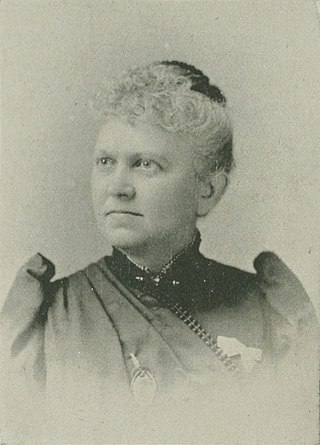
Marietta Stanley Case was a 19th-century American poet and temperance advocate. Her very best poems were entitled, "The Waning Century" and "Amorpatioe", the latter being written for the Daughters of the American Revolution (D.A.R.), as well as "Amor Patriæ", written for her alma mater. She was one of the Connecticut women authors given creditable mention at the Cotton States and International Exposition.
Castilian Club was an American women's study club. It was founded in Boston, Massachusetts, February 8, 1888, by Abba Goold Woolson after a visit to Spain. Sibylla Bailey Crane was a co-founder. According to the Certificates of Corporations Organized Under the General Laws of Massachusetts, the legal date of organization was April 6, 1898 while April 27, 1898 was the date of charter.

Mary Emma Holmes was an American reformer, suffragist, and educator. She was the president of the Equal Suffrage Association of Illinois, and she represented the National American Suffrage Association in the World's Columbian Exposition at Chicago in 1893. Holmes was a member of the Chicago Woman's Club, and was the chair of the Chicago YWCA's travelers' aid department, which had for its object the protection of girls at the region's depots.

Jane Kelley Adams was an American educator. She was always active in the educational work of her city and state, Woburn, Massachusetts. She served as president of the school board and was active among the various societies of college women in the cities near Boston. Adams was also one of the founders of the Woburn Home for Aged Women, president of many clubs and societies, and chair of the Equal Suffrage League.
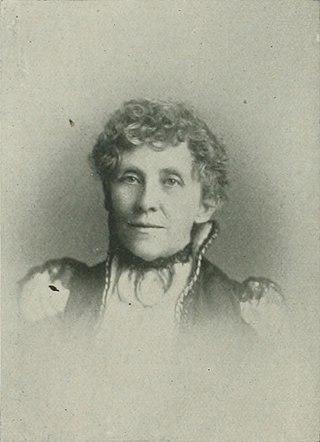
Martha D. Lincoln was an American author and journalist of the long nineteenth century, widely known by her pen name, Bessie Beech. In 1882, she co-founded the Woman's National Press Association, which was the first chartered woman's press organization in the world. She was its first secretary, and served the organization eight years as president.

Jeanette DuBois Meech was an American evangelist and industrial educator. She was well known as an evangelist, who married a Baptist clergyman.
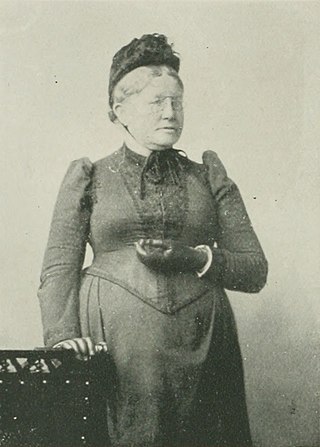
Julia Knowlton Dyer was an American philanthropist of the long nineteenth century. She was associated for over 40 years with nearly every large philanthropic work started in Boston. Her rare executive ability combined with an even temperament made her a natural leader of large bodies. Dyer was prominently connected with 24 associations, only one of which, the Castilian Club, was purely literary. She was president of the Soldiers' Home in Chelsea, Massachusetts, president and founder of the Woman's Charity Club, a member of the executive boards of the Home for Intemperate Women, the Helping Hand Association, and president of the local branch of the Woman's Christian Temperance Union (W.C.T.U.). For 26 years, she was a manager for the Home for Female Prisoners in Dedham, Massachusetts, and was a life member of The Bostonian Society. The Woman's Charity Club Hospital was started by Dyer, president of the Woman's Charity Club; originally located at 28 Chester Park, a few years later, a more commodious hospital was built on Boston's Parker Hill.





















